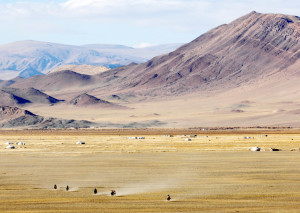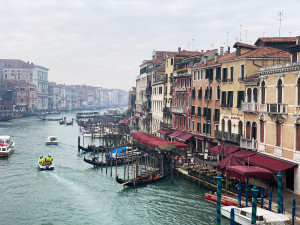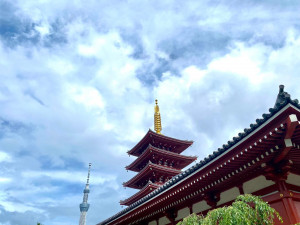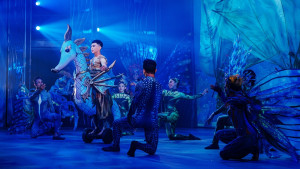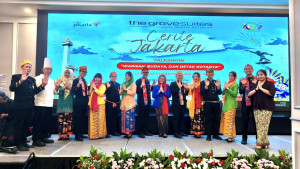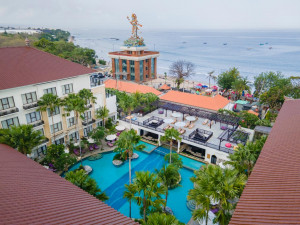It all began when two brothers were fishing in the Sumida River. They cast their nets and fished out a statue of Kannon, the Buddhist goddess of mercy. When they tried to put it back into the water, it kept returning to their nets. A wise man in their village asked them to enshrine it in a temple. This was the famous Sensoji Temple and soon pilgrims began flocking to this miracle temple. This temple town was at the heart of ancient Tokyo, which started life as a small fishing village. Later the powerful samurai extended their help in rebuilding and extending this temple.
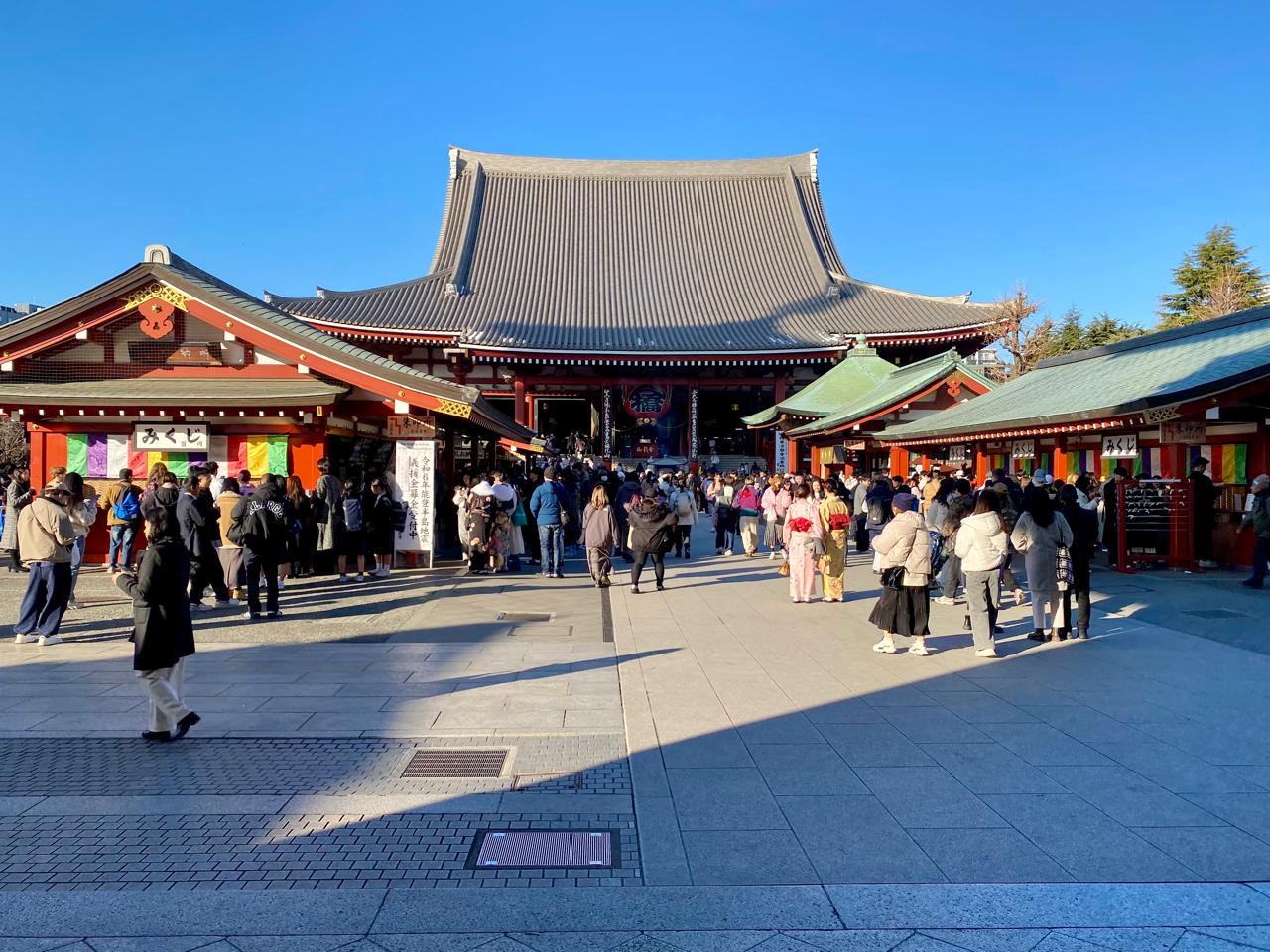
Kuil Sensoji, Asakusa, Tokyo. Photo Makhfud Sappe
Today the crowded area around the Sensoji temple called Asakusa, offers one of the most atmospheric areas in Tokyo — a slice of old Japan, rich in history, in the midst of a modern world of densely packed skyscrapers and neon signs. More than forty million visitors descend on Asakusa every year, in search of ancient Tokyo. This area was also once the entertainment district of the city. It used to be filled with kabuki theatres, geishas and courtesans, actors and artists. Today it is the spiritual heart of the city which offers anyone a chance to see what Tokyo would have been centuries ago.
Visitors enter the area through a tall gate called the Kaminari Mon or the Thunder Gate. On either side of the gate are gargantuan statues of the God of Thunder and the God of wind. Suspended in the middle is a gigantic red and black lantern, that weighs 700 kilograms, and is made from bamboo and paper. At the bottom is a beautiful wooden carving of a dragon, that is seen as a protective deity. The lantern carries a story of gratitude; it was donated by the founder of the Panasonic Company, Matsushita who recovered from an illness after praying at this shrine.
Along the Nakamise Dori, one of the oldest shopping streets of the city, filled with young women in traditional attire of kimonos and elaborate hairdos, and men in yukatas. Stalls sell traditional souvenirs and snacks from folding fans, woodblock prints and senbei rice crackers to hair ornaments made from tortoise shell and manneki nekos (cat figurines that beckon shoppers to enter). Cooks pour batter into different molds shaped like birds, pagodas and lanterns to make mini cakes with a filling of red bean paste called Ningyoyaki. We feast on deep fried mochi, made with a filling of red bean paste and coated with green tea.
Asakusa is the site of many lively festivals throughout the year. The Sanja Matsuri when portable shrines are carried by devotees and the streets are filled with revelry, the Samba Carnival in August and a display of fireworks during the New Year. On the day of Hozuki Ichi, the temple is alive with colour and sound. According to guide Toshi-san, a visit on this day is believed to carry the merit of 46,000 visits made on any other day. Everywhere there are flower stalls with the orange blossom and wind chimes.
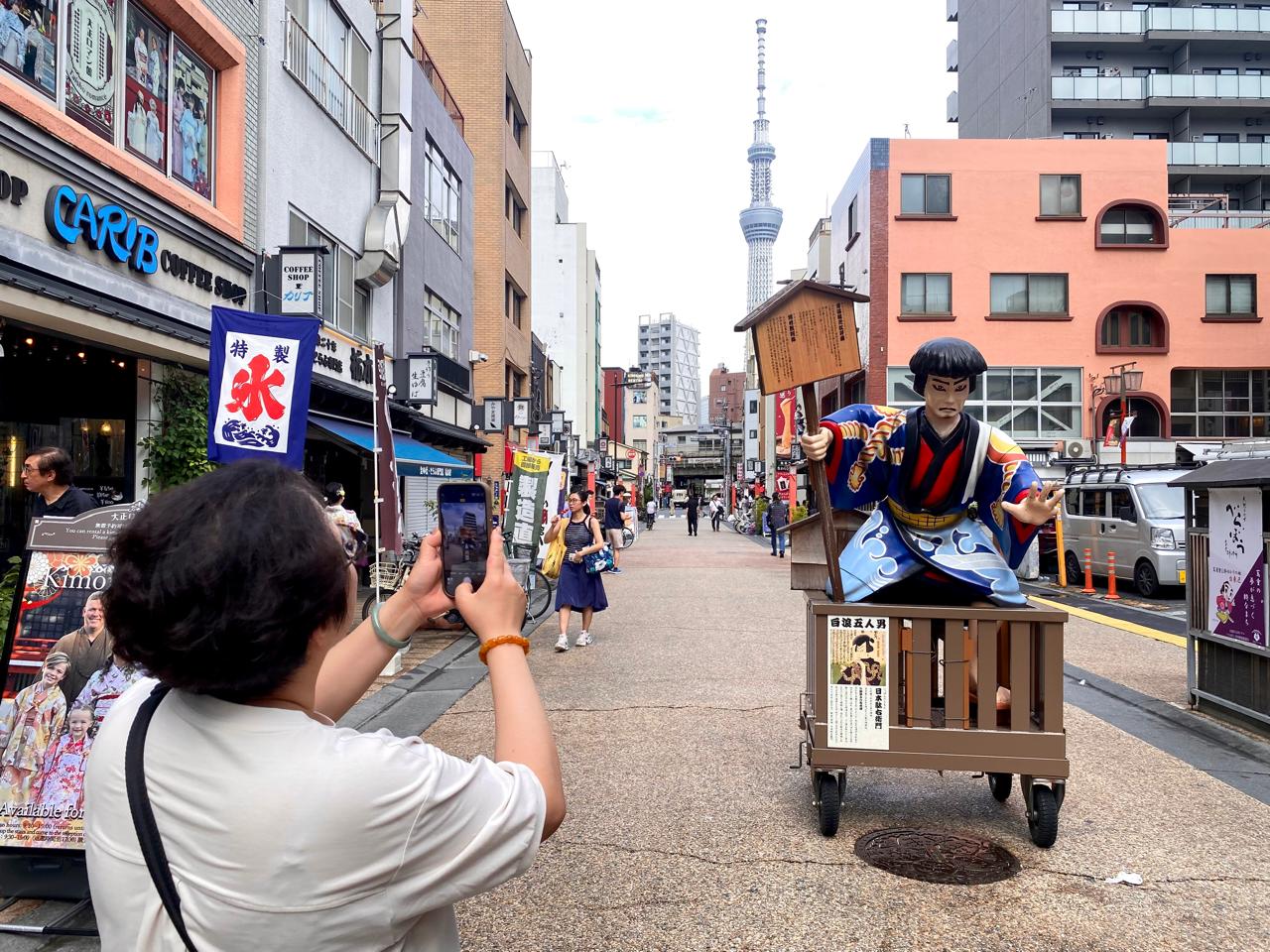
Small streets around the Sensoji Temple complex. Photo by Makhfud Sappe
The second large gate leading to the temple, called the Hozomon has two statue protectors modelled on sumo wrestlers. On the wall are suspended two huge waraji (straw sandals) belonging to the guardian deity. Outside the Sensoji temple is a huge bronze urn with incense and smoke. Locals touch their face with the smoke to ward off illnesses, clap their hands and pray. Outside the temple are protective amulets, scrolls, and even a stall that sells calligraphy with the temple’s seal on it.
Most popular with the locals is the big stall that sells Omikuji paper, this is typical Japanese fortunetelling written on strips of paper and tucked into a bamboo pole. Visitors shake a small container filled with numbered sticks and select one to receive their fortune. The corresponding fortune is then retrieved from a matching numbered drawer on a nearby shelf. If the fortune is unfavourable, tradition encourages tying it to a nearby tree to prevent the bad luck from following them home.
In the temple compound is also a Shinto shrine called the Asakusa Jinja, which miraculously escaped the bombing during World War II( which destroyed a lot of other structures here). In the distance is the Tokyo Sky Tree Building piercing the skies. At 634 meters it is the tallest building in the country today.
Around the Sensoji temple are narrow streets, dotted with shops selling traditional crafts, made as they were centuries ago, like fine wooden combs, oil paper umbrellas and lacquer masks. There are also old fashioned shops selling kimonos and kitchen utensils, and wooden restaurants serving buckwheat soba noodles and tempura in small booths behind small noren curtains. There are also rustic izakayas or bars, that have small rooms and low seating.
Come night, the buildings in Asakusa are all lit up. The Sensoji complex has lighting design by Motoko Ishii, one of Japan’s leading lighting designers, which plays up the bright colours of the buildings. As one leaves the area, it becomes clear that Asakusa has survived with its mystique intact, preserving Japan’s ancient traditions, for posterity. (*)





